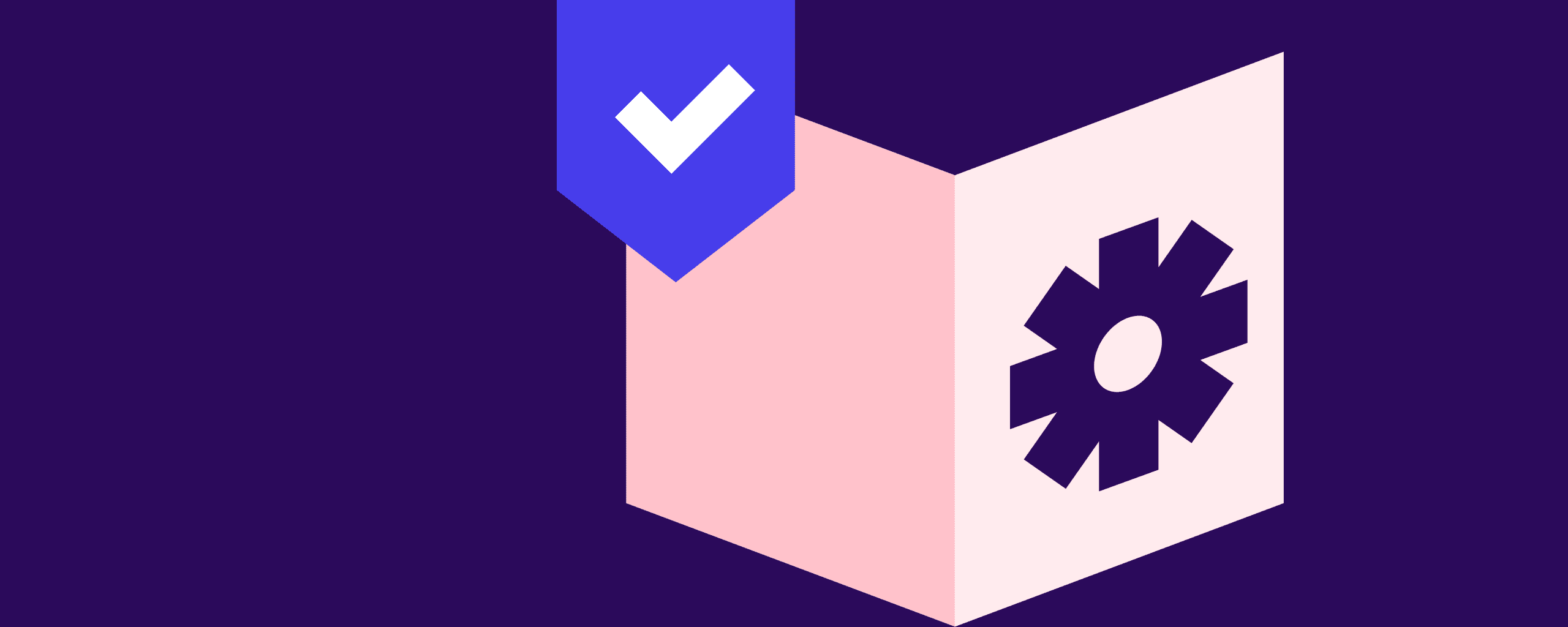Digital Asset Management software (DAM) has become integral to modern-day branding and marketing operations.
With marketing teams now responsible for more digital assets than ever across an ever-growing number of channels and platforms. To ensure end-to-end brand consistency, campaign efficiency and company-wide collaboration, discovering how to choose a Digital Asset Management system is essential for your organization’s ability to compete in your target markets.
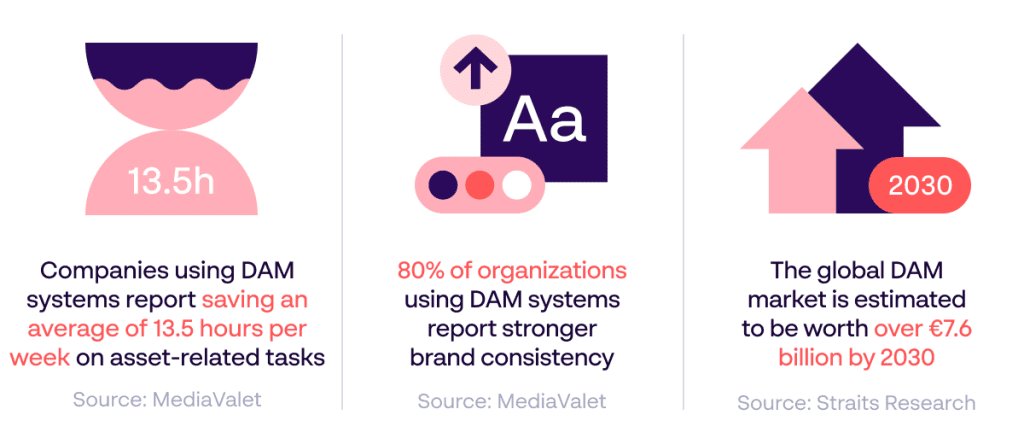
A capable DAM solution enables you to:
- Bring all digital assets into a single, comprehensive library, rather than scattered on desktops, servers, emails, Dropbox and beyond
- Prevent unnecessary file duplications, versions deviations and GDPR breaches, saving your team’s time, locking down consistency and guaranteeing compliance
- Establish different access rights across your team, ensuring that people only see the digital assets relevant to them
- Improve overall efficiency, with everyone knowing where to store and search for files
- Share assets across your marketing ecosystem in a controlled, managed environment
The need for DAM software is clear. But, which is right for your company? As DAM technology has become increasingly important, the choice of solutions has naturally exploded, presenting many possibilities for potential buyers.
While choice can be good, it makes selecting the best DAM software for your organization a real challenge. Not all DAM solutions are created equal, so it’s important you know what to look out for before seeking a system or upgrading your platform.
That’s where this essential guide comes in. Here we’ll outline what features and qualities you should prioritize in your DAM selection process to help guarantee a decision that benefits your creatives, marketers and beyond for a long, long time.
6 essential features defining how to choose a Digital Asset Management system
Understanding the features that separate the best Digital Asset Management tools from the rest is key to meeting the needs of your stakeholders. Below we’ve highlighted some of the most crucial to seek out – some obvious, others less so:
1. Compliance and privacy features
Did you know that in the first quarter of 2024 alone, 20% of marketing assets reviewed were flagged for potential regulatory compliance violations?
Managing consent and compliance to use assets in your content and campaigns is a vital, yet often overlooked, aspect of Digital Asset Management. Approached manually, it’s time-consuming, resource-intensive and prone to human error. The right DAM system ensures the GDPR compliance of your assets is never questioned.
Prioritizing a DAM solution with an in-built consent management tool confirms that:
- Consent for digital assets is captured from QR codes, physical forms or emails
- Assets awaiting consent are flagged as “pending approval”, preventing them from being used until they get the green light
- Assets that lose consent or compliance are automatically revoked from the asset library, removing any risk of these featuring in future content
- Users can exercise their “right to be forgotten” after receiving self-service links to any assets they feature within
By selecting DAM software with dedicated compliance and privacy features, you gain peace of mind that no requests for asset removal will slip through the net, eliminating the risk of costly fines or damage to your brand’s reputation.
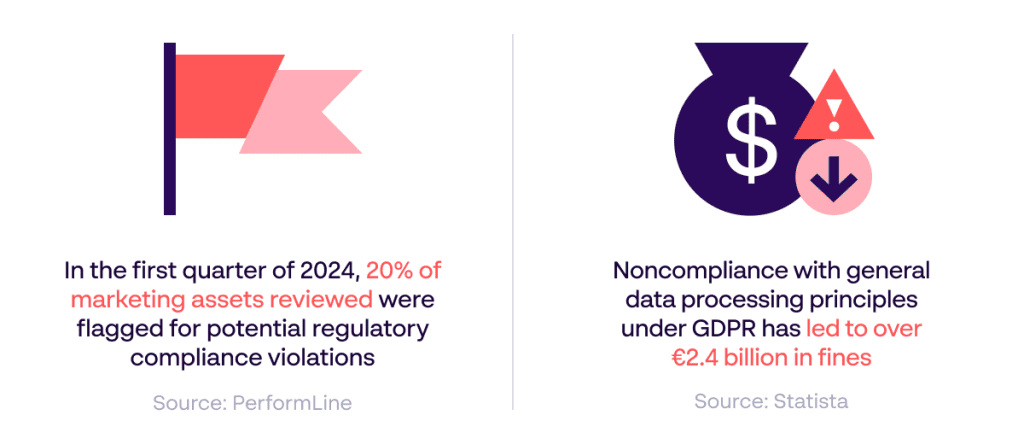
2. A great user interface and usability features
Put simply, a DAM system is only useful if people use it. If the software is too complicated or confusing, users will abandon it, leaving you with nothing but a vacuum of wasted time, resources and potential.
To ensure the effort and investment you put into ensuring your assets are organized, shareable and compliant, it’s critical you purchase a truly intuitive DAM – one that seamlessly fits into the workflows of your marketing managers, content creators and frontline employees.
- Drag-and-drop uploads for easy file storage
- AI-assisted tagging for quick, efficient searches
- Version control to ensure access to the latest assets
- Access control to prevent misuse of assets
- Automated workflows to streamline approvals and distribution
Not overly complex for non-technical users. Not too basic for enterprises seeking total brand governance. That is the perfect balance for a DAM system.
Another key consideration for usability is choosing a DAM with a built-in brand portal. This “front-end” DAM can give your users immediate access to brand guidelines, campaign information and beyond, confirming that everyone understands how and why to use the assets they have access to.
In other words, a brand portal offers a “single source of truth” that informs your users, making it simple for them to manage assets and maintain consistency at every touchpoint.
3. Metadata and categorization
Above all else, a DAM system must make it easy for users to find assets they need when they need them. Therefore, the ability to define metadata tags for each asset – from color scheme and included products to asset type, dimensions and location – is essential for users to search for relevant assets.
The right DAM system must accommodate the unique taxonomy of your organization, establishing a common language that allows people to find the right assets.
Furthermore, selecting DAM software with a multi-level category system means you can create a logical hierarchy for everyone in the company – not just a single department or person.
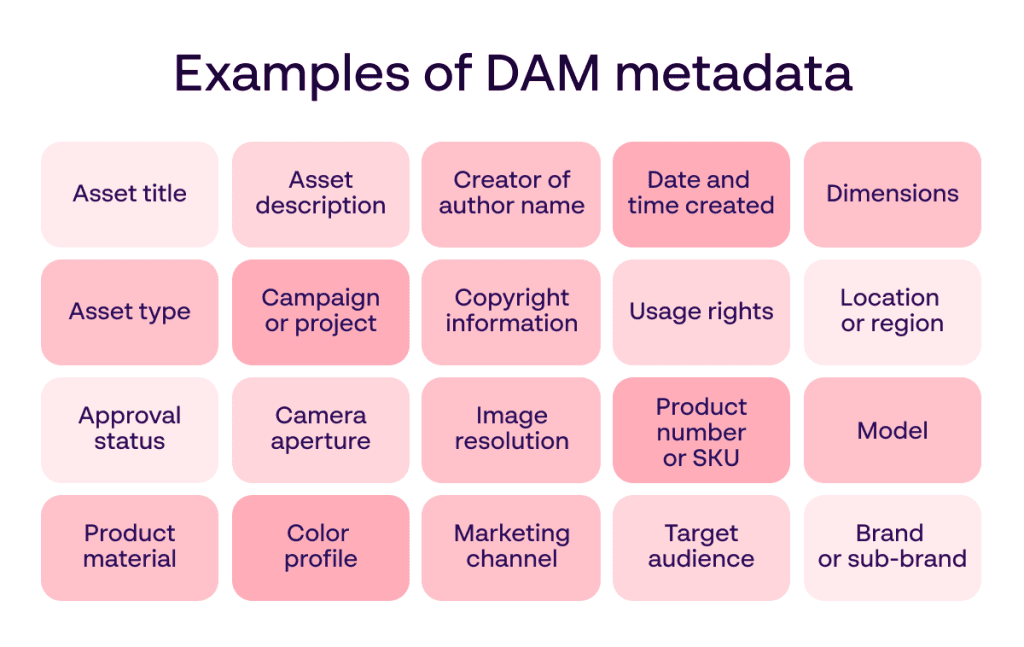
4. Access and version control
DAM solutions with access control and user permissions ensure that only valid users can access relevant materials. It prevents users from mistakenly using assets intended for certain regions or campaigns, supporting your internal and external (agency) users.
Similarly, version control and file expiration management confirm that users only see the most up-to-date version of an asset, so outdated content never makes it to your channels.
5. AI-driven search and capabilities
You don’t want to manually fill in all the metadata and tags attached to your digital files, especially as you create more content to satisfy your audiences. That’s why you should pursue DAM solutions that harness AI technology.
For example, faceted search using generative AI can help users find assets faster by understanding context, recognizing objects and interpreting intent. AI-centred DAM solutions can also analyze digital assets to generate suitable metadata and tags based on your taxonomy guidelines.
As AI technology grows more sophisticated and its influence grows in the DAM space, you want to attach yourself to a vendor at the forefront of these innovations.
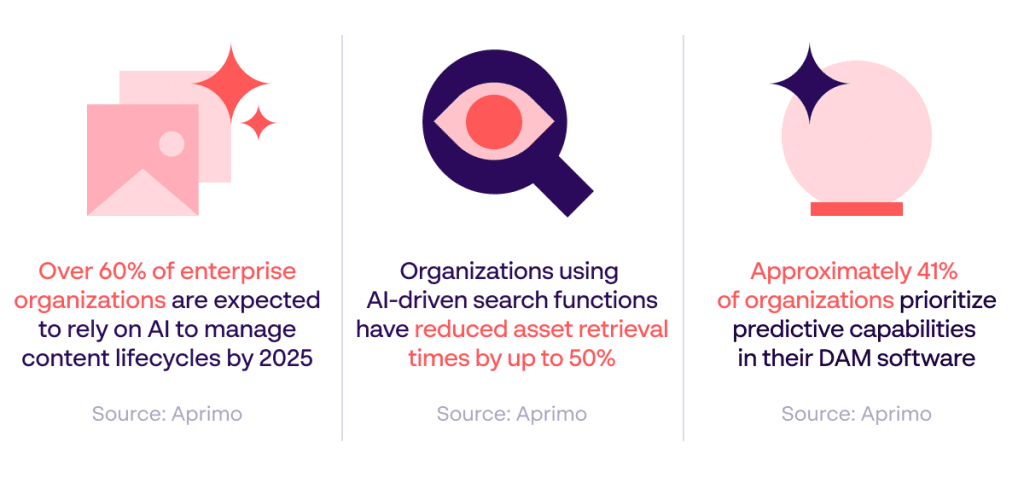
6. On-brand content creation and adaptation
Finally, when there is a growing need for local teams and frontline workers to produce content for their specific audiences, choosing a DAM system with on-brand content creation tools enables you to fulfill that obligation.
Rather than simply being a home for your digital assets – putting pressure on your in-house creatives or agency partners to fill that repository – on-brand content creation empowers users to develop branded, quality assets themselves, regardless of their design skills.
Plus, this functionality enables users to download assets from your DAM library and localize/personalize content for their target markets – increasing the accessibility and return on investment (ROI) of your campaigns.
Other notable features to look out for in any prospective DAM system include:
- File previews
- Automatic file transcoding
- Predefined file formats and uploads
- Cloud storage
- Smart cropping tool
Looking beyond features to find the best DAM systems
Focusing on the key features listed above will be pivotal in your pursuit of top DAM solutions. However, selecting the ideal DAM system for your organization extends beyond the features they do or do not include.
Many providers deliver the same technology and features. What often separates the best from the rest is the DAM software’s characteristics and the vendor’s reputation.
With this in mind, and your aim to acquire a solution that will benefit your whole company and deliver a healthy ROI, make sure you consider the following:
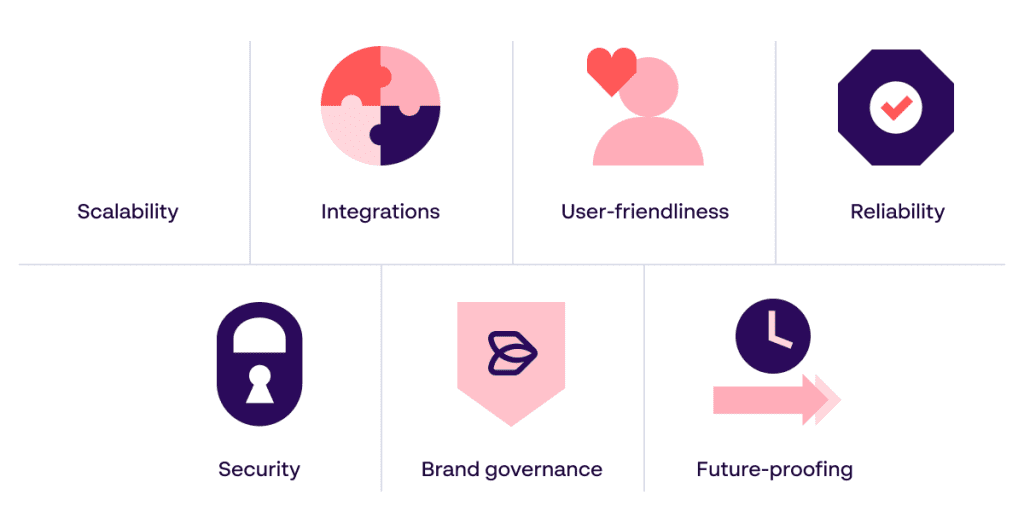
- Scalability: Will the DAM system you select comfortably grow and evolve at the same pace as your company? Does it harness cloud storage to make this attainable yet cost-efficient?
- Integration: Can the DAM solution agreeably integrate with your existing MarTech, or enable you to reduce your dependency on multiple systems? Will it complement your current ecosystem?
- User-friendliness: A DAM system is only valuable if people use it – is the software you’ve identified simple to operate, intuitive and accessible to all users? Is it something you can imagine your teams turning to every day?
- Reliability: You can’t risk your files suddenly becoming unavailable – can you ensure that your DAM system will perform 24/7 for your global teams? What is the platform’s average uptime and responsiveness?
- Security: Does your chosen DAM software incorporate best-in-class security features and protections? Does it include SSO encryption, disaster recovery plans and dedicated managed services?
- Brand governance: Does the DAM solution ensure that every piece of content is 100% compliant? Does it help you fulfill regulations, stay up-to-date with consent rights, and enable seamless sign-off across your assets?
- Future-proofing: Is the DAM vendor behind your selected system consistently looking to improve and innovate its solution? Do they have a development roadmap that signals the evolution of their product?
mentioned in the WP, an assurance that every piece of content is 100% compliant – for specific regulatiory needs (not well phrased), has up-to-date consent for anyone featured in a digital assets, and signed off as good to use as on-brand content.
These qualities and intangibles, combined with a strong track record and reputation for a prospective DAM vendor, must be appreciated alongside a DAM system’s core features to ensure you receive the most rounded, comprehensive solution.
Want to choose the best DAM software? Read our complete buyer’s guide
We hope this article has given you plenty of insight into selecting the most suitable DAM system for your requirements. With the abundance of choice in this market and the central role this technology can play in your ongoing marketing operations, you should know what features and qualities to prioritize in your search.
However, this article merely scratches the surface. If you want to know more about how to choose the right DAM software for your needs, and the process of locating and deploying this technology, get hold of our free, comprehensive DAM Buyer’s Guide:
- Discover all the essential features you should look for in an optimal DAM system
- Know the crucial qualities of a sustainable, future-proof DAM solution
- Understand the key attributes to seek out in a reputable, quality DAM vendor, from managed services to innovation roadmaps
- Explore the critical steps to identify, purchase and install your ideal DAM software, from creating an RFP document to the all-important deployment phase
Whether you’re investing in a DAM system for the first time or seeking to upgrade your existing solution, our complete DAM Buyer’s Guide will help put you on the direct path to the right system for your exact requirements.
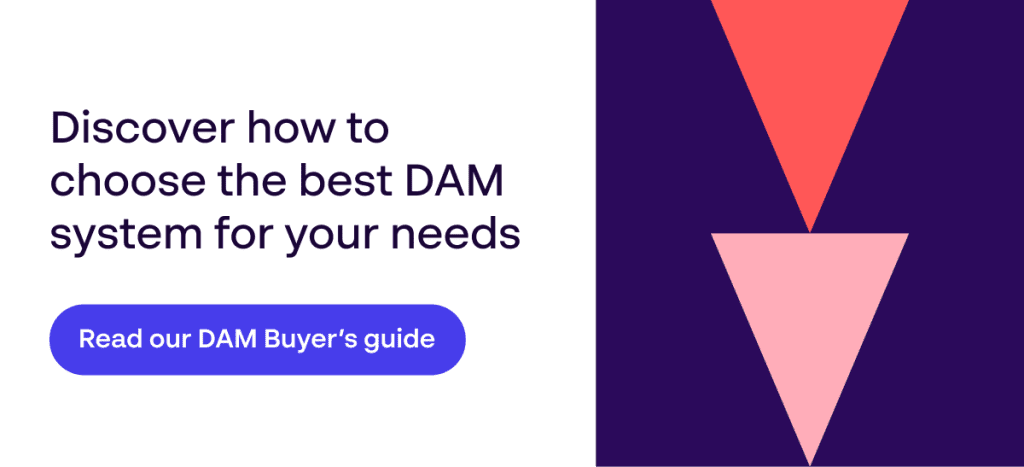
FAQs
A Digital Asset Management (DAM) system is software that stores, organizes, and distributes digital files such as images, videos, and brand assets from one secure location. It helps teams maintain consistency and control across every campaign.
If teams waste time searching for files or using outdated visuals, it’s time for a DAM. A centralized system keeps assets compliant, current, and easy to find—empowering teams to stay on-brand and efficient.
Look for powerful search and filtering, metadata tagging, user permissions, version control, and seamless integrations. The best DAM systems also offer branded portals and AI-driven asset organization.
Define your priorities first—such as asset control, collaboration, or brand governance. Then assess each vendor’s usability, integrations, scalability, and customer support. Focus on adoption potential, not just features.
Avoid choosing purely on price or storage capacity. Many organizations overlook user adoption, taxonomy setup, and brand governance—leading to low engagement and poor ROI.
Costs vary by company size and requirements. Mid-market DAM solutions typically start around €25,000 annually, with pricing based on users, storage, and integrations.
Papirfly combines asset organization with brand visualization. Teams don’t just store assets—they experience the brand. Its modular DAM and brand portal architecture ensure assets are accessible, compliant, and always on-brand.
Implementation timelines depend on complexity. With a structured onboarding plan, migration, and user training, most organizations achieve full adoption within a few months.
Yes. Leading DAMs connect with tools such as Adobe Creative Cloud, Microsoft 365, Google Workspace, and Product Information Management (PIM) systems for smooth workflows.
Brands using enterprise DAMs often see up to 35% faster creative production and a 20–30% reduction in duplicated asset spend (Source: Forrester, 2024).
